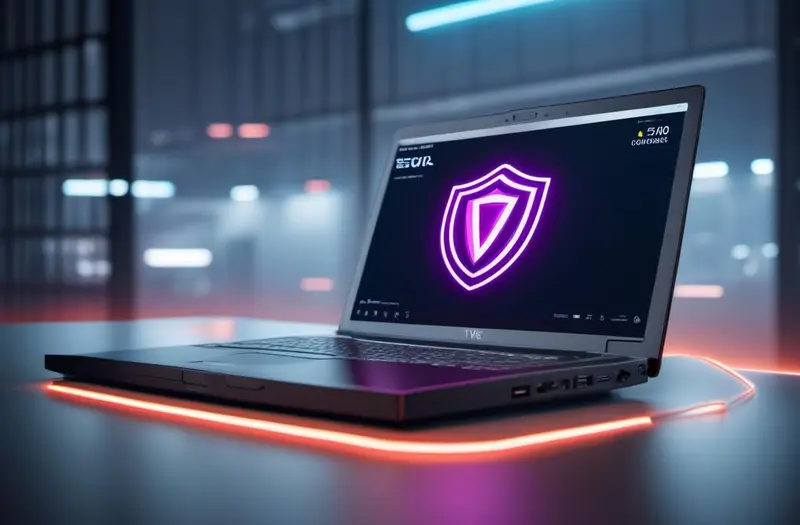vpnpieces.com – Discover how to use a VPN for torrenting securely, configure the best VPN settings, and protect your identity while downloading safely and privately.
Table of Contents
ToggleWhy Use a VPN for Torrenting?
Using a VPN for torrenting provides a shield between our device and the internet, creating a private tunnel for P2P data flow. It ensures anonymity, bypasses ISP throttling, and protects us from DMCA notices.
Without a VPN, torrenting can expose us to several risks:
- ISP monitoring and throttling: Our internet speed can be intentionally slowed down.
- DMCA takedown requests: Copyright holders often monitor torrent networks.
- Public IP exposure: Our IP is visible to everyone on a torrent swarm.
When we use the best VPN for torrenting, we encrypt our torrent traffic and hide our IP address, keeping our identity and data safe.
How VPNs Work with Torrent Clients
To achieve secure torrenting with VPN, we need to understand the technical synergy between VPNs and P2P clients like qBittorrent, uTorrent, or Transmission.
1. Encryption and IP Masking
A VPN encrypts our traffic using secure protocols (e.g., OpenVPN, WireGuard), ensuring ISPs can’t see what we’re downloading.
Key benefits:
- No ISP tracking
- Safe P2P communication
- Bypass regional torrent restrictions
2. VPN-Compatible Torrent Clients
Popular clients that support VPN configurations:
- qBittorrent
- uTorrent
- Deluge
- Vuze
We can configure these with specific VPN ports or proxies for more granular control over privacy.
How to Choose the Best VPN for Torrenting

Not all VPNs are optimized for torrenting. Here’s what we look for:
1. P2P-Friendly Servers
Always choose a VPN that allows torrenting on specific or all servers. Look for P2P-optimized servers for faster download speeds.
2. No-Log Policy
A strict zero-log policy ensures our torrent activity isn’t stored or shared. Providers like NordVPN, ExpressVPN, and ProtonVPN excel in this area.
3. Kill Switch and DNS Leak Protection
A kill switch ensures that if the VPN disconnects, torrent traffic is blocked. DNS leak protection keeps our ISP from seeing our DNS queries.
“A VPN without a kill switch is like locking your door but leaving your window wide open.”
Step-by-Step: Setting Up a VPN for Torrenting
To ensure secure torrenting with VPN, follow these steps:
1. Select a Torrent-Friendly VPN
Choose a provider with P2P servers, a no-log policy, and strong encryption. Some top options include:
- NordVPN
- Surfshark
- ExpressVPN
- ProtonVPN
2. Install the VPN Client
Install the VPN on your device—whether it’s Windows, Mac, Android, iOS, Linux, Firestick, or even a Raspberry Pi.
3. Configure VPN Settings for Torrents
Enable:
- Kill switch
- DNS leak protection
- Split tunneling (if needed)
4. Connect to a P2P Server
Choose a fast VPN server in torrent-friendly countries like Switzerland, Spain, or Romania.
5. Launch Your Torrent Client
Once the VPN is active, open your torrent client (e.g., uTorrent, qBittorrent) and start downloading.
Best VPN Settings for Torrents
To maximize safety and speed, we can optimize our VPN settings:
1. Choose the Right Protocol
OpenVPN (UDP) offers the best balance between speed and security, while WireGuard is newer and faster.
2. Enable Port Forwarding
This can help speed up seeding and improve peer discovery, but only if supported by your VPN.
3. Use a Dedicated IP
Some VPNs offer dedicated IPs for torrenting—ideal for private trackers and stable sessions.
Read More : How to Use VPN in OmeTV
Torrenting on Different Platforms: Configuration Guide
Each device may have unique steps to ensure torrent safety.
Torrenting with VPN on Windows and Mac
Most VPNs provide user-friendly apps. Simply:
- Connect to a P2P server
- Enable kill switch
- Open torrent client
Torrenting with VPN on Android and iOS
Mobile P2P apps like Flud or TorrDroid support torrenting.
- Use native VPN apps with kill switch
- Avoid using unsecured Wi-Fi
Torrenting on Firestick, Chromebook, and Kodi
- Use sideloaded VPN apps or router-level VPNs
- Configure Kodi settings to limit exposure
Read More : How to Use VPN in Firefox
Torrent VPN Configuration for Specific Clients

qBittorrent and VPN
- Use SOCKS5 proxy with authentication for extra anonymity
- Bind the torrent client to your VPN’s IP/interface
uTorrent and VPN
- Go to Preferences → Connection → Proxy Server
- Enable encryption settings for incoming/outgoing traffic
Read More : How to Choose the Best VPN for Your Needs
Comparing VPNs for Torrenting Performance
| VPN Provider | P2P Support | No-Log Policy | Speed (Mbps) | Price/month | Best Feature |
|---|---|---|---|---|---|
| NordVPN | Yes | Yes | 300+ | $3.49 | Dedicated P2P servers |
| ExpressVPN | Yes | Yes | 290+ | $6.67 | TrustedServer technology |
| Surfshark | Yes | Yes | 320+ | $2.49 | Unlimited devices |
| ProtonVPN | Yes | Yes | 270+ | $4.99 | Secure Core architecture |
Data based on independent speed tests across U.S. servers (March 2025)
Avoiding Common Torrenting Risks Without VPN
Torrenting without a VPN can expose us to multiple dangers:
- Legal notices and DMCA complaints
- Data collection and ISP throttling
- Malware and phishing attacks on public trackers
Using a VPN mitigates these threats, making torrenting far safer.
Tools and Features to Enhance Torrent Anonymity
Torrent Anonymity Tools
- SOCKS5 Proxy: Adds a second layer of anonymity
- Obfuscated Servers: Useful in restrictive regions
- Multi-hop VPN: Routes traffic through two VPN servers
Advanced VPN Features
- RAM-only servers: No physical data storage
- Stealth mode: Bypasses VPN blocks on networks
- VPN split tunneling: Routes only torrent traffic through VPN
Bypassing ISP Throttling with VPN
How Throttling Works
ISPs detect high-bandwidth activities like torrenting and slow them down. This is especially common in the U.S.
How VPN Prevents It
- Encrypts torrent traffic, making it invisible to the ISP
- Changes your IP, hiding destination addresses
- Prevents traffic shaping
A 2024 study found that 34% of U.S. users experienced ISP throttling while torrenting—VPNs eliminated this in over 90% of cases.
FAQs
Is torrenting legal in the U.S.?
Yes, but only if the content is copyright-free. Downloading copyrighted content without permission is illegal.
Can I use a free VPN for torrenting?
While some free VPNs allow torrenting, they often have data caps, limited servers, and lack of no-log policies. It’s risky.
What is the best VPN protocol for torrenting?
OpenVPN (UDP) is the most reliable. WireGuard is faster but newer. Avoid PPTP—it’s outdated.
Do I need a kill switch when torrenting?
Yes. Without it, your IP could leak if the VPN connection drops.
What countries are best for VPN torrenting servers?
Switzerland, Romania, Spain, and the Netherlands are known for torrent-friendly laws.
Conclusion
Learning how to use a VPN for torrenting is critical for maintaining anonymity, avoiding legal trouble, and ensuring a smooth download experience. We’ve seen that choosing the right VPN, configuring it correctly, and using the right torrenting tools significantly enhances our online safety. As privacy concerns rise and ISP throttling becomes more common, VPNs serve as our best defense for secure P2P connections.
Key Takeaways
- VPNs encrypt and hide our torrent traffic, making it secure and anonymous.
- The best VPN for torrenting includes a no-log policy, kill switch, and P2P-friendly servers.
- Optimized VPN settings and configurations boost speed and privacy.
- Avoiding torrenting without VPN prevents exposure to legal and privacy risks.
- Free VPNs are not recommended for secure and efficient torrenting.
















